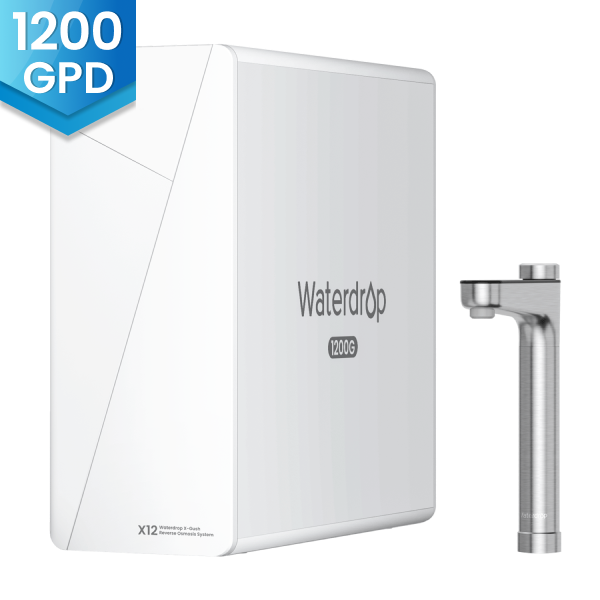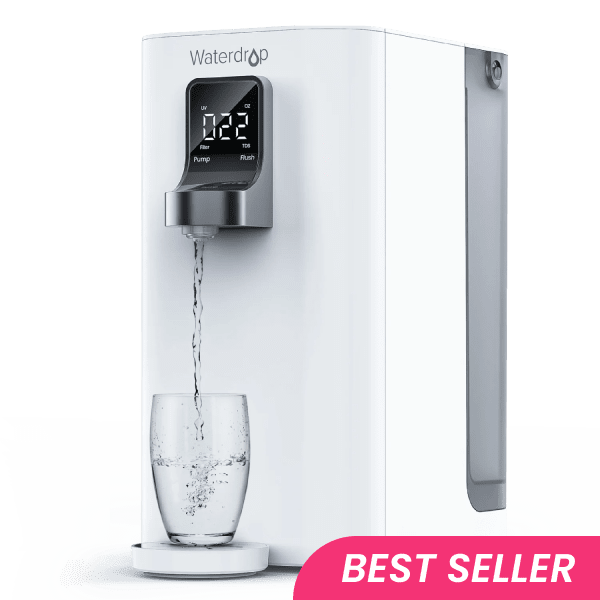Brain-Eating Amoeba in Tap Water: What You Need to Know
by Dr. Jonathan Doyle - Updated April 06, 2023
Florida was in the news earlier this month when a man died from a brain-eating amoeba infection in Charlotte County. According to the news release by the state Health Department in Charlotte County, the infection most likely resulted from “sinus rinse practices utilizing tap water.” The release further stated that the infection, caused by Naegleria fowleri, the brain-eating amoeba, “can only happen when water contaminated with amoebae enters the body through the nose.”
This brain-eating amoeba Florida incident is an eye opener to the brain-eating amoeba and the devastating, or sometimes lethal, effects its infection can have on human health. Therefore, this blog discusses the brain-eating amoeba in relation to its existence in tap water. It also touches on the symptoms of the infection and how to remove the amoeba from your drinking water effectively.
What Is A Brain-Eating Amoeba?
Naegleria fowleri is an amoeba—a single-celled living organism that lives in soil and warm freshwater in the United States, including hot springs, rivers, and lakes. It is called the “brain-eating amoeba” because it can cause brain infections, usually occurring when water containing the amoeba finds its way into the human body.
Some ways the amoeba can enter the human body through the nose include swimming, diving, going under freshwater like rivers and lakes, and rinsing the face or nose with infected tap water. While it exists throughout the year as a thermophilic or heat-loving organism, it is more prevalent during the warmer months when the water temperatures are hot.
The brain-eating amoeba infection is not spread from one person to another, so there are only a few cases each year in the United States. Therefore, the risk of infection is also relatively low. However, people must assume there is a risk of infection whenever they get into warm freshwater or engage in activities like swimming, especially in Texas, Florida, and other southern states.
How Do You Know If The Brain-Eating Amoeba Exists in Your Tap Water?
While most brain-eating amoeba California infection cases have been associated with freshwater rivers and lakes, tap or faucet water getting into the nose is also a rare cause of death from the infection. Also established is the fact that this amoeba can grow in public and private water tanks and pipes. The chances are even higher when there is little or no disinfectant like chloramine or chlorine in the picture.
Unfortunately, the amoeba is not visible to the naked eye. Therefore, you cannot detect the presence of the brain-eating amoeba in your tap water by visual observation. There are also no rapid, standardized tests to detect its presence. As a homeowner, the weakest infection link to N. fowleri is your municipal water coming into your home as tap or faucet water. Once your municipal water is infected, the tap water in your home is also infected and subsequently unfit for drinking, and other household uses.
You should always watch out for announcements and directives from the local health and environment authorities on public water contamination. For example, a reported case of brain-eating amoeba contamination or infection may force you to be without drinking water for days, weeks, or even months, depending on how long it takes to decontaminate the body of water affected. Hence, it is always advisable to have another source of safe drinking water asides from municipal tap water.
What Are the Symptoms of the Brain-Eating Amoeba?
Most scientific references consider brain-eating amoeba infection a rare condition, with an expected zero to eight infections within a year. For most people, Naegleria fowleri will not survive in their body system because they have the protozoan’s antibodies that can fight off the foreign body. However, for others who are not so lucky, the amoeba will attack their body systems and compromise their health.
The infection comes with a wave of symptoms. But contrary to what the name suggests, the amoeba does not literarily eat the brain. Instead, it attacks the brain aggressively, leaving it severely damaged. It may be fatal in cases where there is an internal swelling of the brain. Some early-stage symptoms include vomiting, nausea, fever, and severe frontal headache. Later-stage symptoms of brain-eating amoeba infection are more severe: stiff neck, seizures, hallucinations, mental confusion, and coma.
The symptoms of brain-eating amoeba infection are not always immediate. In most cases, they take 1-12 days after initial exposure to become visible, although casualties may occur after 3 to 7 days of the first symptoms. Unfortunately, the survival rate is also low in the United States and the world.
How Do You Remove Brain-Eating Amoeba from Water?
The best way to combat the brain-eating amoeba is to avoid it. For example, not swimming or wading in warm freshwater locations, not using tap water for neti pots, and not using untreated tap water as sinus rinses. However, finding ways to remove the microorganism from your water source becomes imperative when these are impossible. That is where water treatment and purification methods come in.
Purifying tap water using a suitable method will eliminate the brain-eating amoeba in it. Like other microorganisms, including bacteria, viruses, and protozoans, found in water, specific water purification methods will remove N. fowleri from your water. These include:
Boiling
Boiling is the simplest water purification method. Just pour the contaminated water into a container, leave it to a full, rolling boil, and continue boiling for another ten minutes. This kills all living organisms in water by eliminating oxygen. However, boiling tap water only eliminates bacteria, but it does not eliminate harmful substances like chlorine and heavy metals, such as lead. In fact, boiling tap water contaminated with lead can increase the concentration of this contaminant, making it more dangerous than before.
Disinfection
Disinfection involves removing, killing, or inactivating the pathogenic microorganisms present in water using disinfectants. Physical disinfectants include heat, ultraviolet light, and electronic radiation, while chemical disinfectants include chlorine, chlorine oxide, and ozone. Disinfecting water leaves the microorganisms inactive and unable to grow, reproduce, or harm the consumer. Nevertheless, residual chlorine will leave an undesirable water taste.
Water Filtration
Water filters are another efficient method of eliminating brain-eating amoeba in water. Most water filters are designed to be effective against most contaminants in water, including microorganisms like bacteria, viruses, and protozoans. They also reduce impurities like dirt, sediment, heavy metals, nitrates, and other chemicals in the water.
The market has tons of water filters—all in different forms and sizes. Some are for household uses, while others are for emergency and outdoor uses. The filtration principle each water filter adopts differs. If you’re looking for a reliable solution to ensure clean drinking water, a reverse osmosis water filter system would be the perfect choice due to its exceptional filtration capabilities. The reverse osmosis membrane has a pore size of 0.0001 micron, allowing only water molecules to pass through while preventing the passage of contaminants such as organics and dissolved salts.
The Waterdrop RO system G3P800 is equipped with a LED lamp with lifespan as long as 50 years. The LED can be automatically turned on when water flows by and has the sterilization rate of up to 99.9%. Click for Waterdrop G3P800 Reverse Osmosis Tankless Water Filter Review.
Key Features:
- 800 GPD high capacity
- UV sterilizing light
- 3:1 pure to drain ratio
- NSF/ANSI 58 & 372 certified
- 9-stage filtration
- Smart faucet
- Tankless design
Final Words
The outlook is very poor for anyone infected by Naegleria fowleri or the brain-eating amoeba. The chances of survival are very low, even with treatment. Therefore, the best way to combat the situation is to avoid it. However, in cases where your municipal or household water is infected with this deadly microorganism, you can adopt suitable water purification methods to remove it and make your water fit for drinking and other domestic uses.
If you exhibit fever or headache symptoms after playing in warm freshwater, please visit your healthcare provider immediately.
Recommended Reading:
Contaminants Detected in Fruitland Water
Special
Service District
30
Contaminants
EXCEED EWG HEALTH GUIDELINES
EXCEED EWG HEALTH GUIDELINES
30 Total Contaminants in Your Water
Water Provider
Fruitland Water Special Service DistrictPopulation Affected
120,000Water Source
Ground waterExceeds Guidelines
Others Detected















